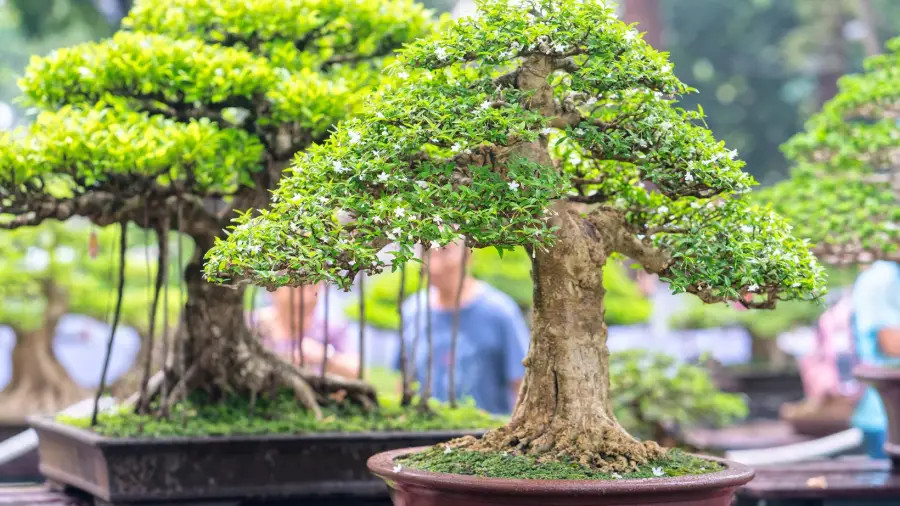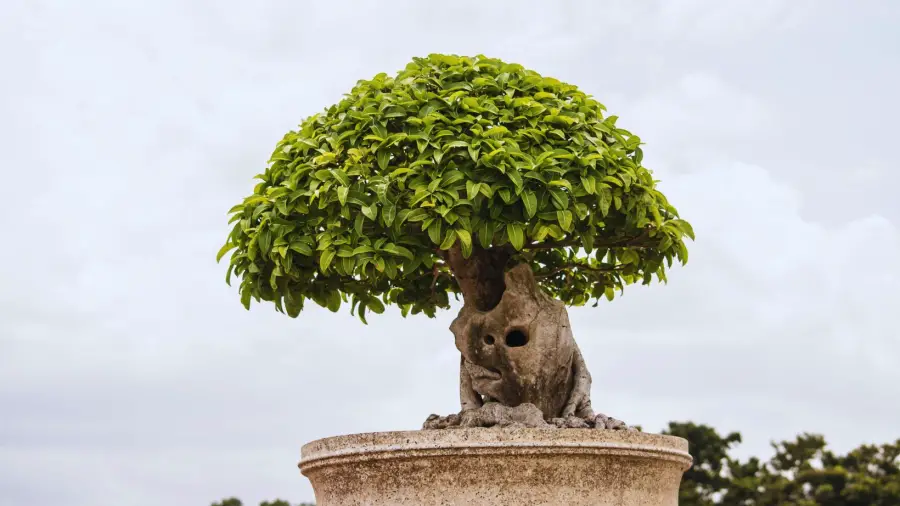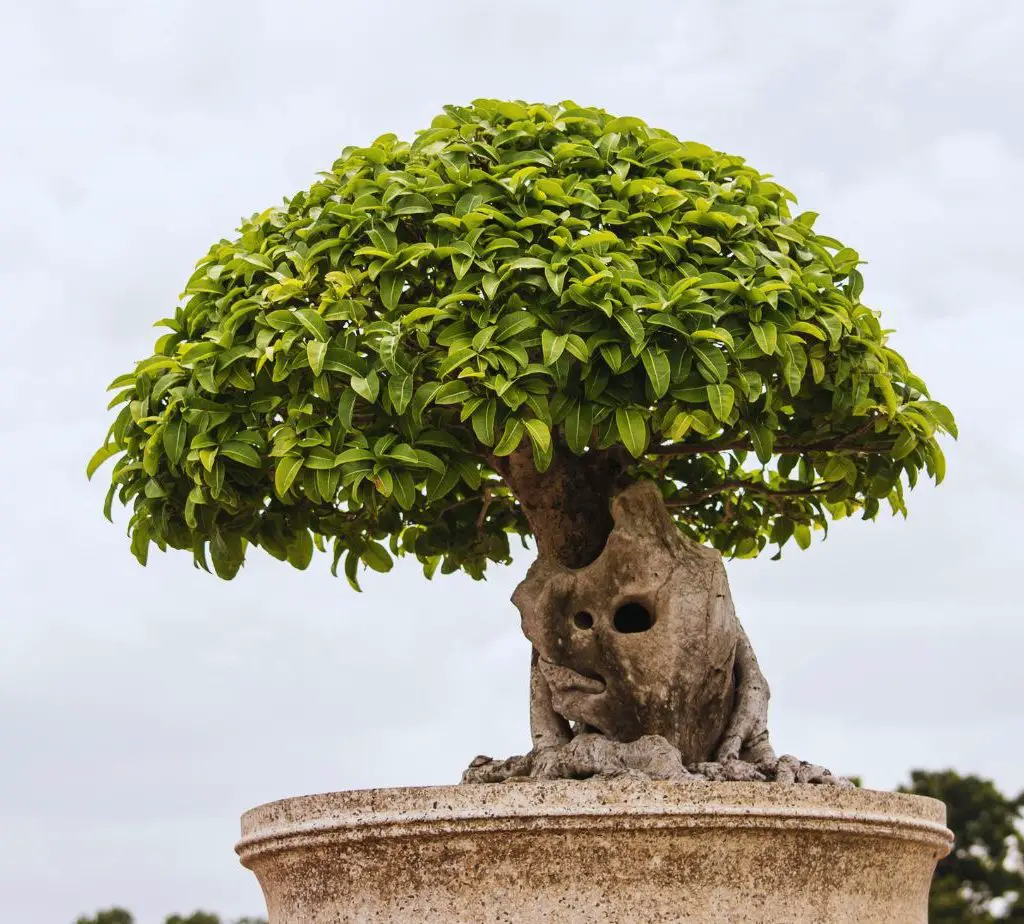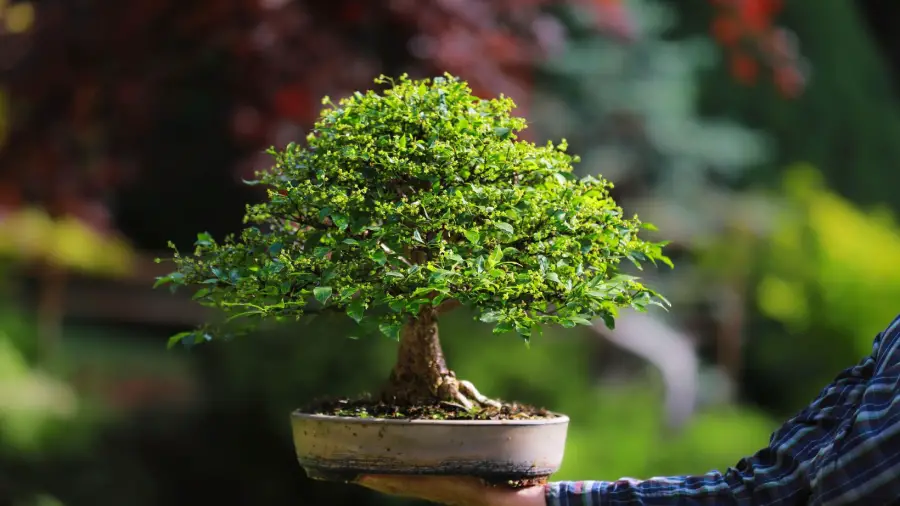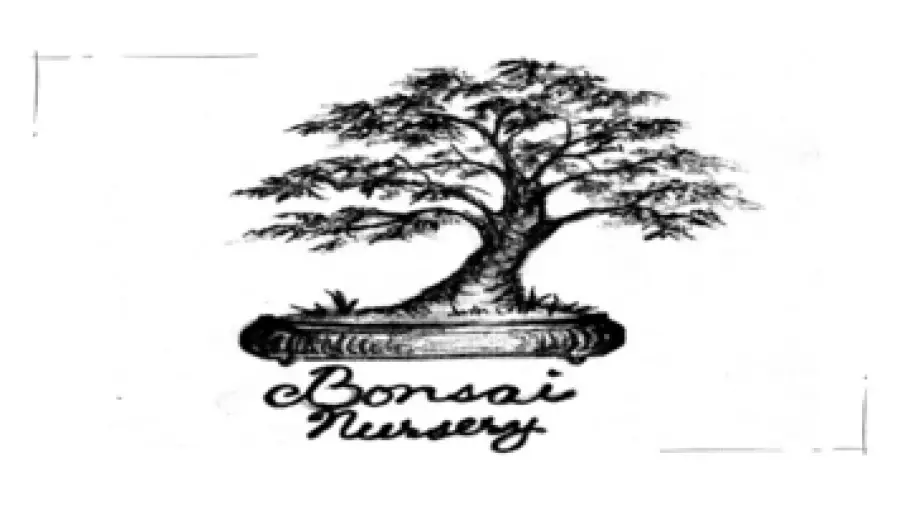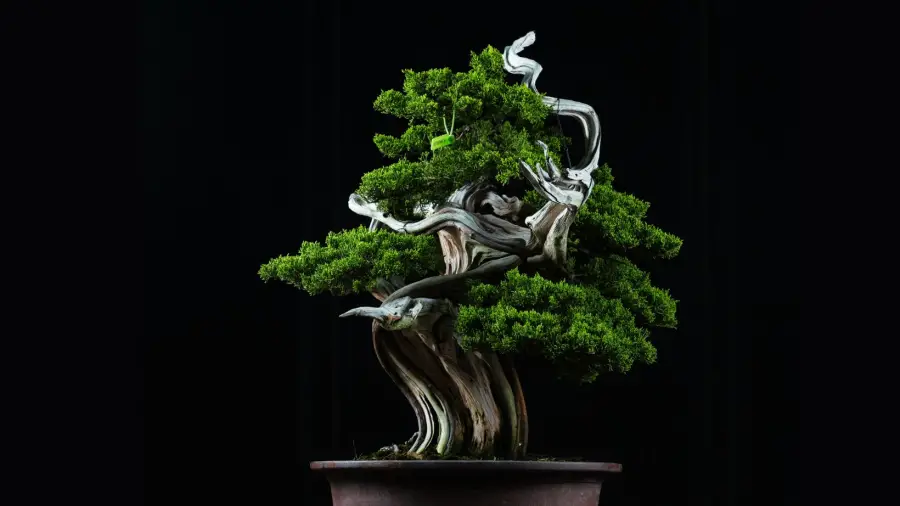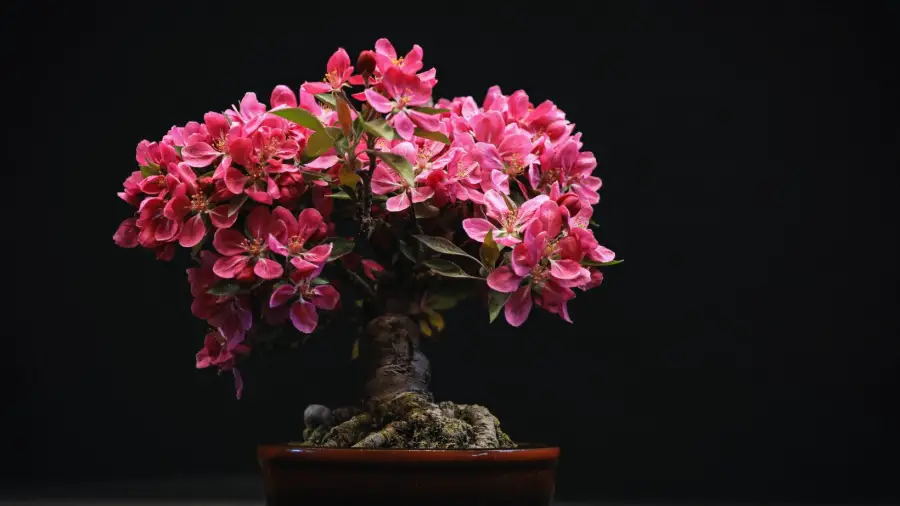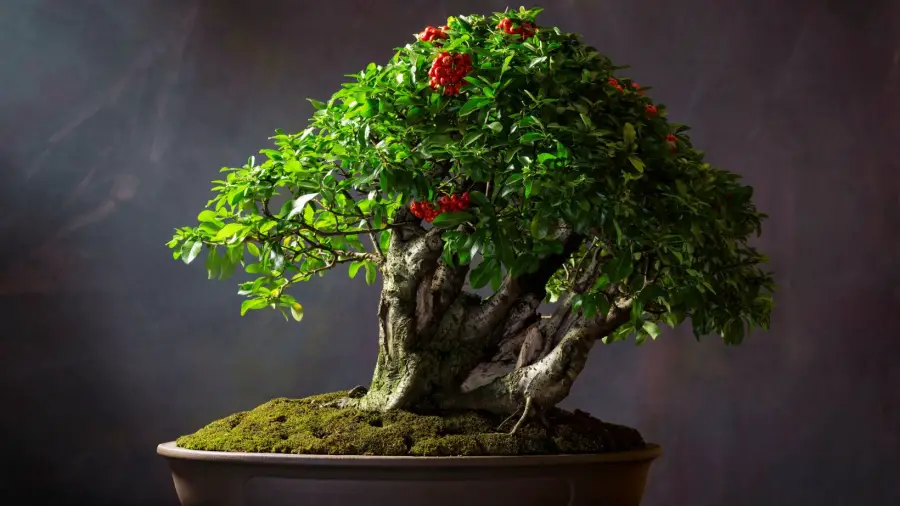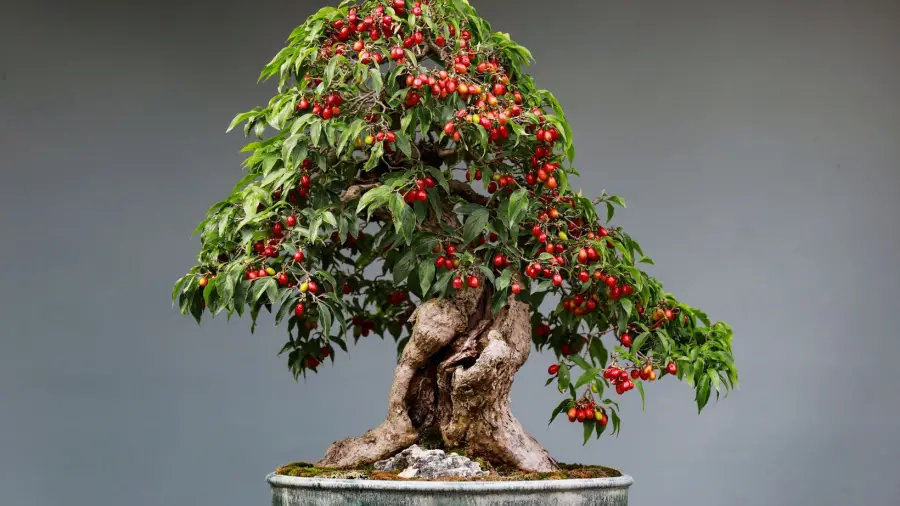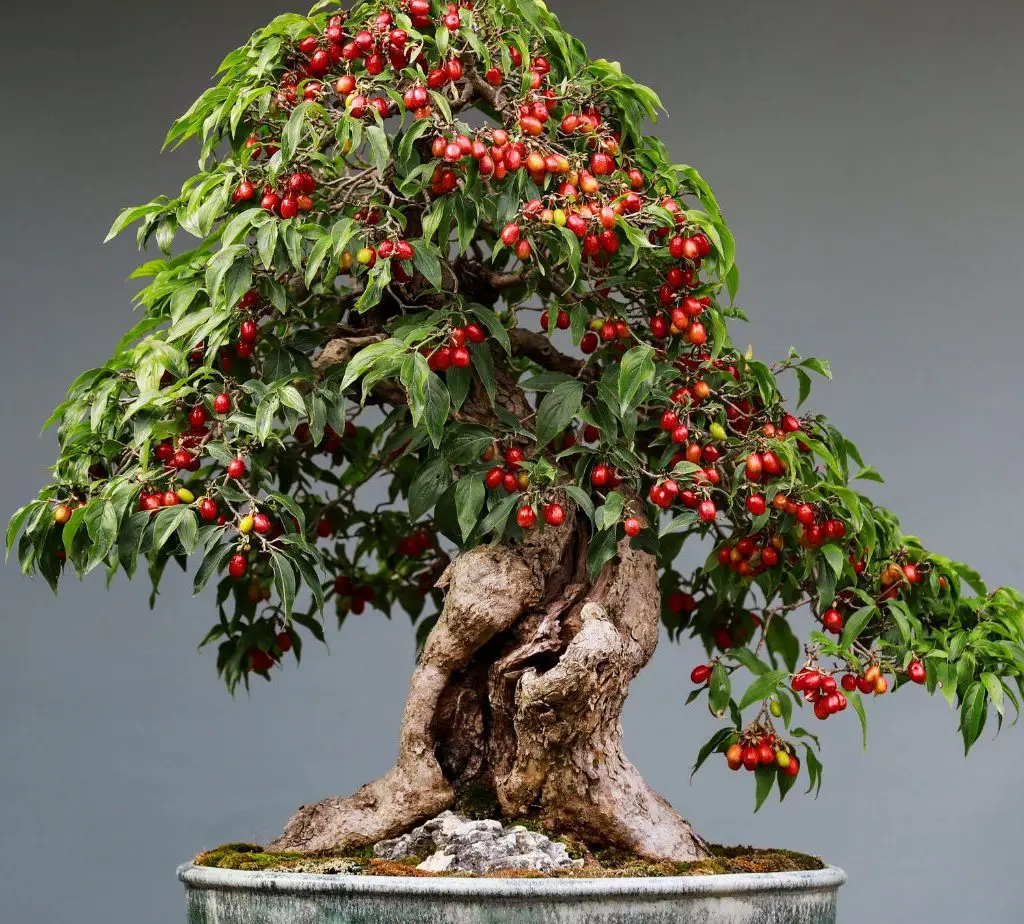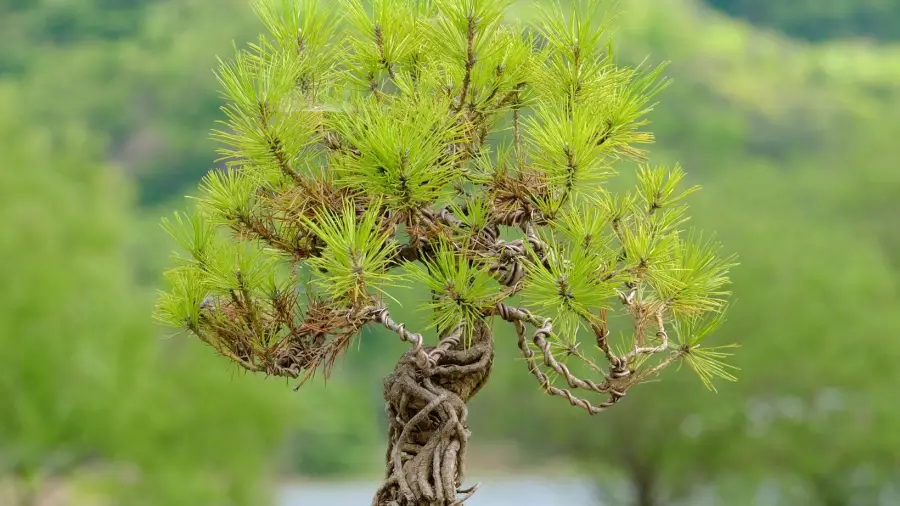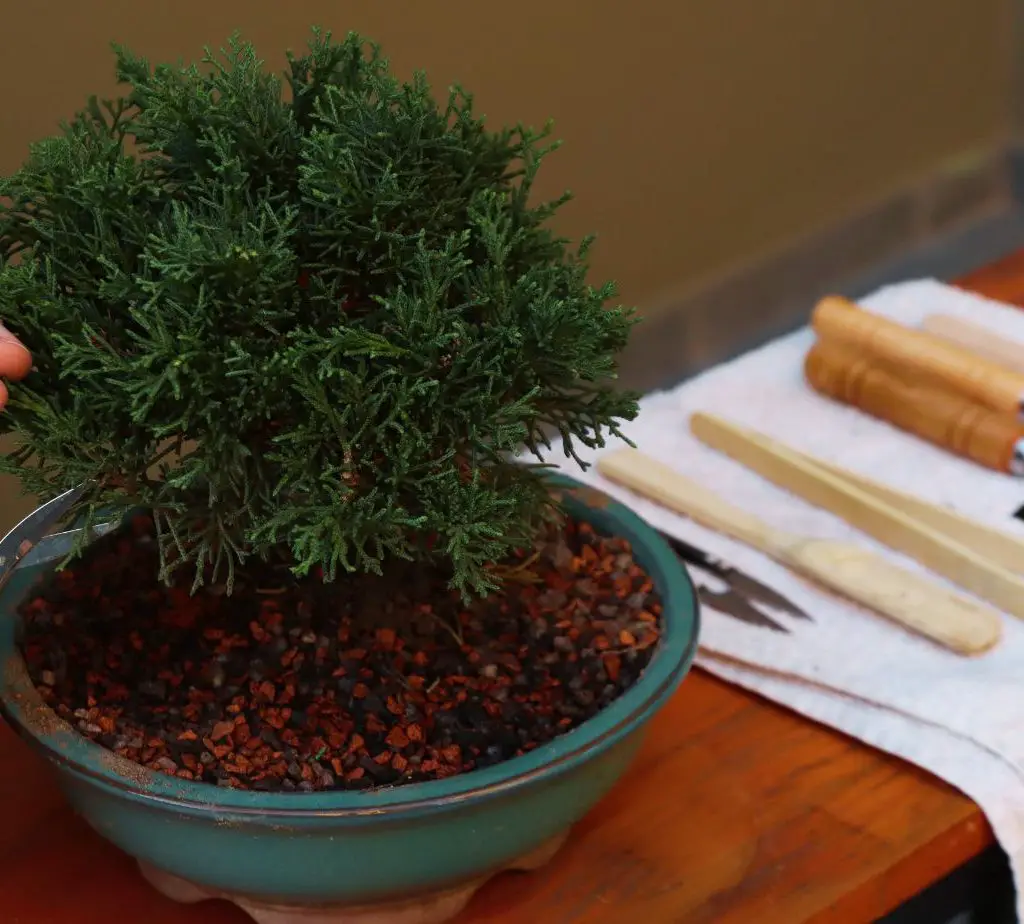Bonsai exhibitions showcase miniature masterpieces, featuring meticulously cultivated trees in a stunning display. These exhibitions provide a platform for bonsai enthusiasts to showcase their skills and passion for this ancient art form.
Bonsai, originating from China and later adopted by the Japanese, involves the cultivation of small, potted trees that mimic the shape and scale of full-sized trees. These exhibitions attract thousands of visitors who appreciate the intricate beauty and delicate artistry of these miniature living sculptures.
From traditional Japanese gardens to contemporary art galleries, bonsai exhibitions offer a unique opportunity to immerse oneself in the serenity and artistry of this timeless practice.

Table of Contents
Selecting And Styling The Perfect Bonsai Trees
When it comes to bonsai exhibitions, the spotlight is on the miniature masterpieces that captivate and inspire onlookers. These carefully cultivated trees are not only a testament to the skill and dedication of bonsai enthusiasts but also a reflection of nature’s beauty in smaller form. To showcase these delicate treasures, it is imperative to select and style the perfect bonsai trees.
Choosing The Right Species For Display
When selecting bonsai trees for exhibition, it is crucial to consider the species that are most suitable for display. Different species have varying characteristics and growth patterns, and not all trees are equally suited to thrive as bonsai. It’s important to choose species that have small leaves and branches, as these attributes enhance the illusion of a mature tree in miniature form.
Moreover, selecting species that are native to your region or climate will ensure that the bonsai trees remain healthy and vigorous throughout the exhibition. Native species are naturally adapted to the local environment, making them more resilient to fluctuations in temperature and humidity.
Shaping And Pruning Techniques
Shaping and pruning are essential techniques in the art of bonsai, and they play a crucial role in styling the perfect trees for exhibition. Through meticulous pruning and wiring, bonsai artists can guide the growth of the trees, creating graceful curves, intricate branch structure, and visually pleasing proportions.
Pruning helps maintain the compact size of the bonsai while promoting ramification, the intricate branching that gives the tree its artistic appeal. By selectively removing unwanted branches and foliage, the bonsai artist ensures that every aspect of the tree contributes to the overall design.
Wiring is often utilized to bend and position branches, creating movement and rhythm within the bonsai. This technique allows for subtle adjustments to achieve the desired aesthetic. However, it requires careful handling to avoid damaging the delicate structure of the tree.
(To know about when to wiring Bonsai : https://bonsainurserybd.com/bonsai-when-to-wire/)
Potting And Repotting Considerations
The choice of pot for a bonsai tree is not merely functional but also plays a significant role in its overall presentation. When it comes to selecting a pot for exhibition, one must consider the size, shape, color, and style that complement the bonsai’s aesthetics, allowing it to harmonize with its surroundings.
Bonsai exhibition trees are often repotted at regular intervals to maintain their health and preserve the refined look desired for the exhibition. Repotting serves several purposes, including refreshing the soil, improving drainage, and preventing root bound. It is crucial to carefully handle the roots during repotting to avoid unnecessary stress on the tree.
| Potting and Repotting Tips: |
|---|
| 1. Use a well-draining bonsai soil mix to promote healthy root development. |
| 2. Prune back long, thick roots to encourage finer feeder roots. |
| 3. Repot your bonsai trees during the appropriate season for the species to minimize stress and optimize growth. |
| 4. After repotting, provide the tree with adequate protection from excessive sunlight and wind. |
By paying attention to potting and repotting considerations, bonsai enthusiasts can ensure that their exhibition trees not only withstand the rigors of display but also continue to thrive and captivate the audience.
Creating The Ideal Bonsai Display
Discover the art of creating the ideal bonsai display at bonsai exhibitions. Marvel at the miniature masterpieces showcased, highlighting the intricate beauty of these ancient trees.
Designing an Attractive and Harmonious Composition
When it comes to bonsai exhibitions, the design of the display plays a crucial role in showcasing these miniature masterpieces. Designing an attractive and harmonious composition will enhance the overall presentation, making it more captivating for viewers. A well-thought-out arrangement of bonsai trees can create a visual harmony where each element complements the others. To achieve this, consider the following:
1. Balance: Aim for a sense of balance between the different components of the display. Ensure that the heights, shapes, and textures of the bonsai trees are distributed evenly throughout the composition.
2. Proportions: Pay attention to the proportions of the bonsai trees in relation to the size of the display area. Avoid overcrowding or leaving too much empty space. Strive for a visually pleasing balance between the trees and the available space.
3. Focal Point: Introduce a focal point within the display to draw attention and create a sense of purpose. This could be a particularly striking bonsai tree or an element such as a rock, accent plant, or figurine. The focal point should be strategically placed to guide the viewer’s eyes and enhance the overall visual appeal.
Selecting the Proper Display Accessories
The choice of display accessories can greatly influence the impact of a bonsai exhibition. Selecting the proper accessories will complement the bonsai trees and contribute to the overall aesthetic. Consider the following guidelines when choosing display accessories:
1. Stand: A stand is an essential accessory that elevates the bonsai and provides a sturdy base. Select a stand that suits the style and size of the bonsai tree. It should enhance the natural beauty of the tree without overpowering it.
2. Accent Plants: Adding accent plants to the display can enhance the overall presentation. Choose plants that harmonize with the bonsai tree and complement its colors and textures. Consider using moss, ground covers, or small flowering plants as accent pieces.
3. Decorative Elements: Including decorative elements such as rocks, figurines, or small water features can add interest and depth to the display. These elements should be thoughtfully placed to complement the bonsai trees without distracting from their beauty.
Utilizing Techniques to Enhance Presentation
In addition to designing an attractive composition and selecting the right accessories, there are techniques that can further enhance the presentation of the bonsai exhibition. By utilizing these techniques, you can create a visually captivating display that leaves a lasting impression. Consider the following:
1. Lighting: Proper lighting can make a significant difference in highlighting the details and natural beauty of the bonsai trees. Use adjustable spotlights or soft ambient lighting to create depth and shadows, adding a dynamic element to the display.
2. Typography: Adding informative and visually appealing labels to the display can educate viewers while enhancing the overall presentation. Use clear and easily readable typography to provide details about each bonsai tree, such as its species, age, and history.
3. Seasonal Themes: Incorporating seasonal themes into the display can create a unique and memorable experience for viewers. Consider using specific plants or accessories that evoke a sense of the season, such as cherry blossoms in spring or miniature snow-covered trees in winter.
In conclusion, creating the ideal bonsai display requires careful consideration of composition, selection of accessories, and utilization of presentation techniques. By designing an attractive and harmonious composition, selecting the proper display accessories, and utilizing techniques to enhance the presentation, you can showcase these miniature masterpieces in a way that captivates and delights the viewers.
The Importance Of Displaying Bonsai
Displaying bonsai is more than just showcasing miniature trees. It is an invaluable way to promote the art of bonsai, inspire visitors with these miniature masterpieces, and create a sense of appreciation for the patience and skill required to cultivate these living works of art. Let’s explore the various reasons why displaying bonsai at exhibitions is of utmost importance.
Promoting The Art Of Bonsai
One of the primary purposes of bonsai exhibitions is to promote the art form itself. By bringing these meticulously crafted miniature trees to public view, enthusiasts and experts alike can educate the general public about the artistry, technique, and history of bonsai. It helps raise awareness about the cultural significance of bonsai, making it more accessible to a wider audience.
At these exhibitions, visitors have the opportunity to witness the beauty and creativity that can be achieved with bonsai. The intricate details and delicate balance between the tree, container, and overall display captivate observers and generate curiosity. This interest can lead to a greater understanding and appreciation for the art, enticing individuals to explore bonsai further.
Inspiring Visitors With Miniature Masterpieces
One of the most enchanting aspects of displaying bonsai is the ability to inspire visitors. Bonsai trees, with their serene and time-honored aesthetic, have a unique ability to evoke tranquility and a connection to nature. By interacting with these miniature masterpieces firsthand, individuals can experience a sense of awe and wonder, fostering a deep appreciation for the natural world.
These exhibitions provide an opportunity for visitors to see the diversity of bonsai styles and techniques, showcasing the endless possibilities within the art form. Each miniature tree tells a story, reflecting the vision and creativity of its creator. Visitors are often astounded by the level of patience and dedication required to achieve such beauty in such a small-scale living sculpture.
The inspiration derived from these exhibitions is not only limited to the artistic aspect of bonsai but also extends to the values they embody. The harmony between humans and nature, the need for patience and care, and the constant pursuit of refinement resonate with visitors on a deeper level. These exhibitions serve as a reminder of the wisdom and teachings passed down through generations, providing invaluable life lessons that extend beyond the realm of horticulture.
In conclusion, the importance of displaying bonsai at exhibitions cannot be overstated. It is through these showcases that the art of bonsai is promoted, allowing it to reach a wider audience and fostering a greater appreciation for the intricacy and creativity involved. Moreover, these exhibitions inspire visitors by showcasing miniature masterpieces that inspire tranquility, evoke a connection to nature, and embody profound values. Therefore, attending a bonsai exhibition is an opportunity not to be missed for both bonsai enthusiasts and those new to this captivating art form.
Techniques For Effective Exhibition Display
Bonsai exhibitions are a unique opportunity to showcase the exquisite beauty and mastery of this ancient art form. At these exhibitions, skilled artists and enthusiasts gather to display their miniature masterpieces and impress the audience with their creativity and precision. The success of a bonsai exhibition lies not only in the quality of the trees but also in the careful arrangement and presentation. In this article, we will explore some essential techniques for creating an effective exhibition display that will captivate the viewers and leave a lasting impression.
Arranging Bonsai In Various Styles And Sizes
One of the key elements in creating a visually striking bonsai exhibition display is arranging the trees in different styles and sizes. By using a variety of styles such as formal upright, slanting, cascading, and semi-cascade, you can create a dynamic and diverse display that showcases the versatility of the art. Placing larger bonsai trees at the center and gradually reducing the size towards the edges creates a sense of harmony and balance.
Balancing Act: Proportions And Symmetry
In bonsai exhibitions, maintaining proper proportions and symmetry is crucial to creating a visually pleasing display. Each bonsai tree should be carefully positioned to complement its surroundings and create a sense of equilibrium. Pay attention to the height, width, and depth of each tree, ensuring they harmonize with the overall composition. Proportional balance not only enhances the aesthetic appeal but also demonstrates the artist’s skill and meticulous attention to detail.
Utilizing Accent Plants And Decorative Elements
Accent plants and decorative elements play a significant role in enhancing the overall beauty and charm of a bonsai exhibition display. By strategically placing carefully selected accent plants that add a pop of color or texture, you can create focal points that draw attention to specific bonsai trees. In addition, the inclusion of decorative elements such as stones, rocks, or miniature figurines can add depth and interest to the exhibition display, bringing the entire exhibit to life.
Moreover, proper lighting is key to fully showcase the intricate details and textures of the bonsai trees. It is essential to position the lighting strategically to highlight the unique features of each tree and create a captivating display that mesmerizes the audience.
Judging And Evaluating Bonsai Exhibits
When it comes to bonsai exhibitions, one aspect that truly captures the interest and excitement of enthusiasts is the judging and evaluation of these miniature masterpieces. Bonsai exhibits provide a platform for artisans and enthusiasts to display their expertise in cultivating and shaping these beautiful miniature trees. The process of judging and evaluating bonsai exhibits is crucial in recognizing and appreciating the artistry, skill, and effort that goes into creating these living works of art. In this section, we will explore the criteria for assessing bonsai exhibits and delve into the key factors that are considered during the evaluation process.
Understanding The Criteria For Assessment
Bonsai exhibits are assessed based on a set of criteria that encompass various aspects of their presentation. These criteria ensure that a fair and comprehensive evaluation takes place, providing a platform for bonsai artists to showcase their creativity and skill. The criteria for assessment typically include factors such as:
- Tree health and condition
- Aesthetic appeal and artistic merit
- Compositional balance and design
- Container selection and harmony
- Root system and nebari (surface roots)
Each of these criteria plays a vital role in evaluating the overall quality and craftsmanship of a bonsai exhibit. Attention to detail in each category is important, as it contributes to the impression of harmony and naturalness that bonsai exhibits strive to achieve.
Evaluating The Health And Condition Of Bonsai Trees
One of the key aspects considered during the judging process is the health and condition of the bonsai trees. A healthy bonsai, with vibrant foliage and vigorous growth, indicates not only the skill of the bonsai artist in maintaining the tree’s well-being but also the potential for future development. Judges closely examine aspects such as:
- Foliage density and color
- Overall vigor and growth pattern
- Pruning and wiring techniques used
- Condition of the trunk and branches
- Presence of pests or diseases
Evaluating the health and condition of bonsai trees is essential in determining the success of the artist in nurturing and maintaining these delicate living sculptures.
Appreciating The Aesthetic Appeal And Artistic Merit
Another crucial aspect in judging bonsai exhibits is the aesthetic appeal and artistic merit of the overall composition. Bonsai are meant to resemble mature trees in nature, striving for a sense of harmony, balance, and naturalness. Judges focus on various elements when evaluating the aesthetics, such as:
- Branch placement and ramification
- Trunk taper and movement
- Nebari and root system presentation
- Seasonal interest and display potential
- Visual impact and overall impression
These elements come together to create a visually captivating and emotionally evocative piece of living art. Judges carefully analyze the artistic choices made by the bonsai artist, considering the level of technical skill and understanding of bonsai aesthetics.
Ultimately, the judging and evaluation of bonsai exhibits serve not only to identify exceptional pieces of art but also to educate and inspire both creators and spectators. It gives artists the opportunity to receive feedback, recognition, and constructive criticism, ultimately leading to the growth and advancement of the art of bonsai.
Spreading Appreciation For Bonsai Art
Bonsai, the ancient Japanese art form of cultivating miniature trees, has captivated the hearts of people around the world. Bonsai exhibitions provide a unique platform for enthusiasts and artists to come together, showcasing their miniature masterpieces and sharing their passion for the craft. These exhibitions not only serve as a visual treat but also play a crucial role in fostering a deeper appreciation for the art of bonsai. Through various displays and activities, they cultivate interest in bonsai culture, encourage artistic expression and creativity, and ultimately contribute to the preservation and growth of this extraordinary art form.
Cultivating Interest In Bonsai Culture
Bonsai exhibitions serve as a gateway for individuals to get introduced to the rich heritage and cultural significance of bonsai. Visitors are immersed in the world of miniature trees, where they can witness the painstaking craftsmanship and meticulous effort that goes into creating these living works of art. These exhibitions not only display a variety of bonsai styles and species but also educate visitors about the history, techniques, and philosophies behind bonsai cultivation. By captivating the curiosity of both bonsai enthusiasts and newcomers alike, these exhibitions create a sense of intrigue and appreciation for the bonsai culture.
- Displays a variety of bonsai styles and species
- Educates visitors about the history, techniques, and philosophies of bonsai
- Captivates the curiosity of bonsai enthusiasts and newcomers alike
- Creates a sense of intrigue and appreciation for the bonsai culture
Encouraging Artistic Expression And Creativity
Bonsai exhibitions not only provide inspiration but also encourage artists to explore their artistic expression and creativity in the realm of bonsai cultivation. By observing the intricate designs, unique compositions, and creative aesthetics of each bonsai tree on display, artists can gain insights into different artistic approaches and techniques. This exposure stimulates their imagination and pushes them to experiment with different styles, shapes, and arrangements in their own bonsai creations. Through seminars, workshops, and interactions with experienced bonsai artists, these exhibitions serve as a catalyst for artists to hone their skills and push the boundaries of bonsai art.
- Observing intricate designs, unique compositions, and creative aesthetics of each bonsai tree
- Gaining insights into different artistic approaches and techniques
- Stimulating imagination and pushing artists to experiment with different styles
- Attending seminars, workshops, and interacting with experienced bonsai artists
- Honing skills and pushing the boundaries of bonsai art
Preserving And Continuing The Art Of Bonsai
Preserving the art of bonsai is not just about maintaining the delicate balance between nature and artistic expression—it is also about passing on this ancient practice to future generations. Bonsai, the art of cultivating miniature trees, requires skill, patience, and an understanding of horticulture. To ensure the longevity of this revered art form, it is vital to educate and inspire the next generation of bonsai artists. One way of achieving this is through the medium of bonsai exhibitions.
Educating The Next Generation Of Bonsai Artists
One of the primary roles of bonsai exhibitions is to educate and inspire the next generation of bonsai artists. These exhibitions provide a platform for experienced bonsai practitioners to showcase their skillful creations and share their knowledge and techniques. By participating in these exhibitions, emerging bonsai artists can learn from established masters and gain valuable insights into the intricate world of bonsai cultivation.
The exhibitions also serve as an opportunity for budding artists to observe the diversity of bonsai styles, ranging from traditional Japanese to contemporary interpretations. This exposure to various artistic approaches encourages creativity and innovation while instilling a deep respect for the principles of bonsai. The exhibition spaces often include informative displays, demonstrations, and workshops, creating an immersive learning experience for anyone interested in the art of bonsai.
Furthermore, by actively involving the younger generation, bonsai exhibitions help bridge the gap between the traditional art form and modern aspirations. These exhibitions encourage the exploration of new techniques, materials, and design concepts while stressing the importance of preserving the rich heritage of bonsai. By embracing the changing times and showcasing the relevance of bonsai in today’s world, the exhibitions foster an environment that motivates young artists to carry forward the legacy of this timeless art form.
The Role Of Bonsai Exhibitions In Conservation Efforts
Aside from their educational value, bonsai exhibitions play a crucial role in conservation efforts. These exhibitions often feature a wide range of bonsai specimens, some of which are rare or endangered species. By showcasing these miniature masterpieces, exhibitions create awareness about the importance of preserving biodiversity and protecting the natural environment.
Bonsai artists, in particular, have a deep understanding of the delicate balance required to cultivate and sustain the health of these miniature trees. Through their creations, bonsai artists highlight the impact of human activities on the natural world and emphasize the need to conserve ecosystems for future generations.
In addition, bonsai exhibitions provide a networking platform for horticulturists, botanists, and bonsai enthusiasts, enabling the exchange of knowledge and resources essential for conservation efforts. These events often support environmental organizations and initiatives, raising awareness and funds in support of conservation causes.
Ultimately, bonsai exhibitions serve as a catalyst for both education and conservation. They not only inspire the next generation of bonsai artists but also reinforce the importance of environmental stewardship. By preserving and continuing the art of bonsai, these exhibitions contribute to the sustainable future of our planet and help us appreciate the beauty and interconnectedness of nature.
Frequently Asked Questions For “bonsai Exhibitions: Showcasing Miniature Masterpieces”
What Are Bonsai Exhibitions?
Bonsai exhibitions are events where miniature trees are displayed to showcase the art of bonsai cultivation. These exhibitions provide an opportunity for bonsai enthusiasts to appreciate the skill, creativity, and beauty of these miniature masterpieces.
Why Attend A Bonsai Exhibition?
Attending a bonsai exhibition allows you to immerse yourself in the world of bonsai and gain inspiration for your own cultivation. You can learn different techniques, admire stunning bonsai creations, and connect with fellow enthusiasts. It’s a unique opportunity to appreciate the artistry and tranquility of these miniature trees.
How Are Bonsai Trees Selected For Exhibitions?
Bonsai trees that are selected for exhibitions undergo a meticulous process. Experts evaluate various factors such as the tree’s shape, trunk formation, branch structure, and overall health. Aesthetics, balance, and the artist’s vision are also considered. Only the finest bonsai trees are chosen to be displayed at these prestigious events.
Can Beginners Attend Bonsai Exhibitions?
Absolutely! Bonsai exhibitions welcome enthusiasts of all skill levels, including beginners. Attending an exhibition as a beginner can be a great learning opportunity, allowing you to observe different bonsai styles, seek advice from experts, and gain inspiration for your own journey into the world of bonsai.
Conclusion
Bonsai exhibitions offer a unique opportunity to witness the beauty and craftsmanship of miniature masterpieces. These events provide a platform for bonsai enthusiasts to showcase their skills and creativity while fostering a sense of community among enthusiasts. Whether you are a seasoned bonsai lover or a curious newcomer, attending a bonsai exhibition is a must-do experience that will leave you in awe of these living works of art.
So, mark your calendars and get ready to be captivated by the enchanting world of bonsai.
